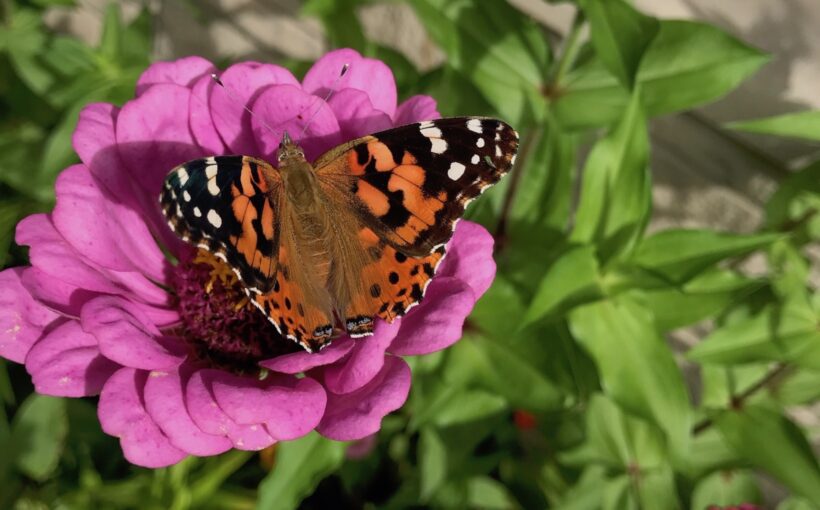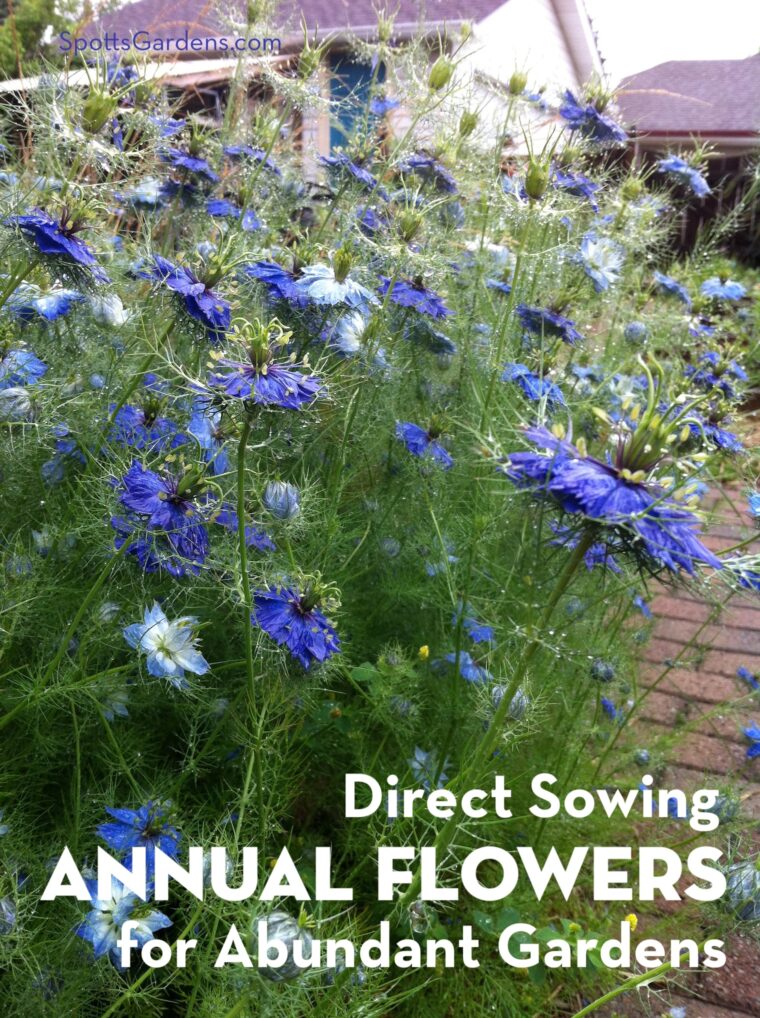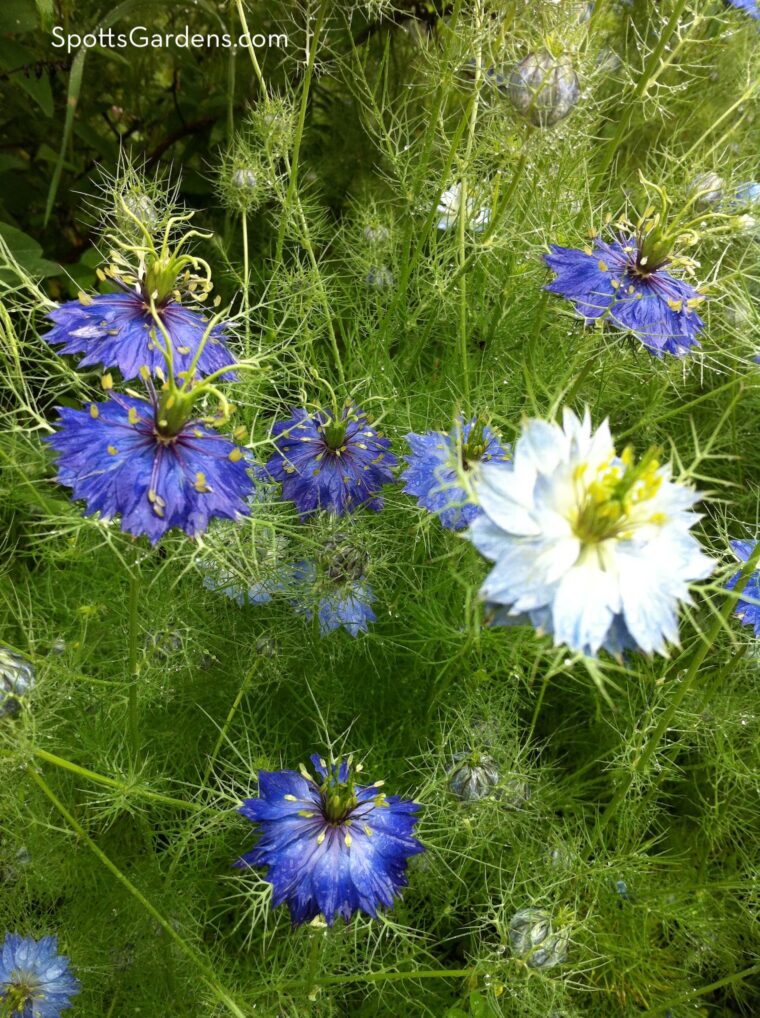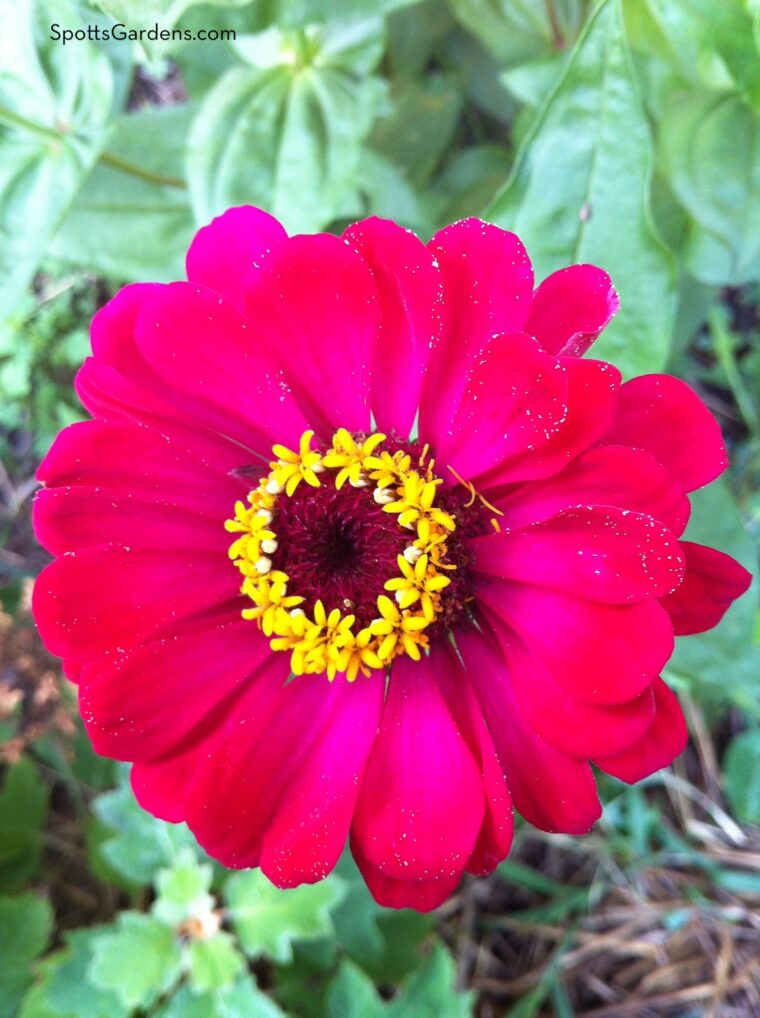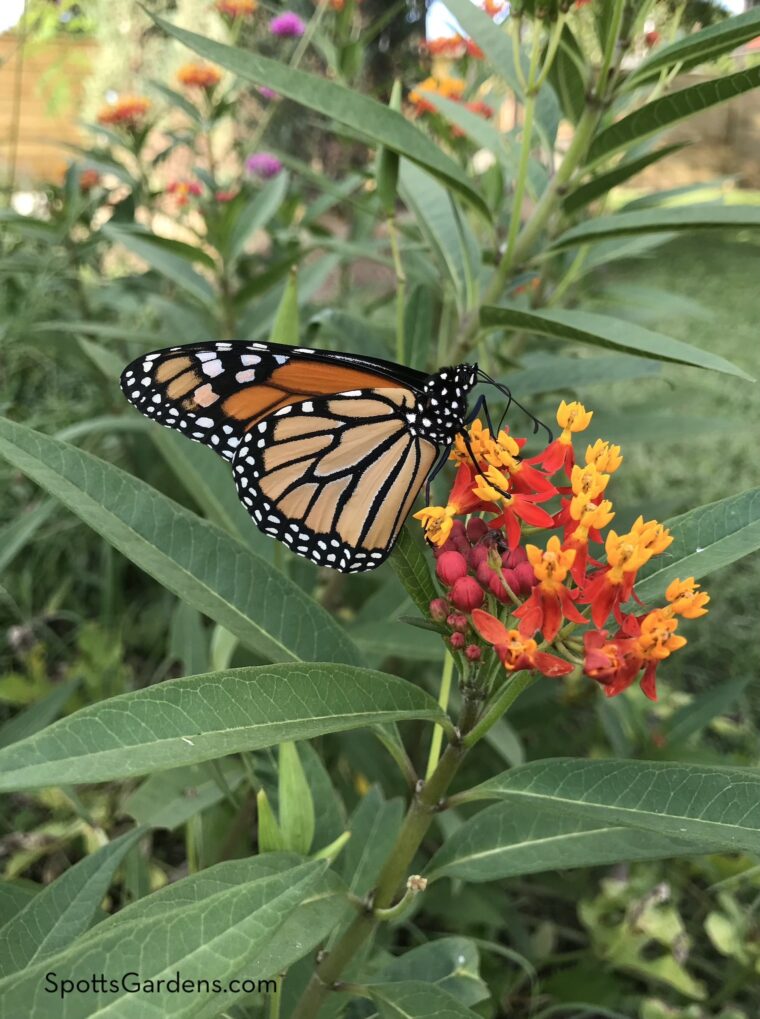If the only annuals you plant are the bedding plants that come in plastic packs from the nursery, you’re missing an inexpensive way to make your garden look lush. Annual flowers grown from direct-sown seeds provide a huge return on very little investment!
Bedding Annuals Versus Direct Sown Annuals
The bedding plants you see in nurseries are generally either annuals or tender perennials (plants that would be perennial in their native zone but aren’t here). Examples include petunias, impatiens, and sweet potato vine. They won’t survive winter, and they won’t grow from seed in the garden without a head start. To use them, you have to put them in the garden as plants, not seed.
Because they get a head start in a nursery, these plants are super for container gardens or packing into small beds in the garden. But if you use a lot of them in the garden, you’ll end up spending a fortune replacing them every year.
Fortunately, many annual flowers are perfectly happy to grow from seed right in the garden, a process called direct sowing. Seeds are considerably cheaper than bedding plants, so direct-sown annuals are a bargain.
Hardiness in Annuals vs. in Other Plants
Annuals are classified as hardy or half-hardy depending on how much cold the annual plant can take. Pansies are hardy, because they can shake off short periods of freezing temperatures. Petunias are half-hardy, because they won’t survive frost.
The hardiness of annuals determines how early in the spring you can plant.
- Hardy annuals can live an entire one year lifecycle—from seed to bloom to setting new seed—outdoors. So they can be planted in very early spring or even in fall to bloom the following spring.
- Half-hardy annuals are sensitive to frost, so they must be started indoors OR direct sown after threat of frost has passed.
Note that a “hardy annual” isn’t the same thing as “hardy plant.” Hardiness in plants refers to how much cold the grown plant can take. For trees, shrubs, grasses, and perennials, plant hardiness is defined in terms of zones. For example, “This perennial is hardy to zone 6” means that it will survive the winter in zone 6 (central Indiana is in zone 6; see the hardiness map here).
Self Seeding Annuals
Self-seeding annuals are annuals that re-seed themselves, reliably resulting in new flowers the following spring. They’re the biggest bargain you can get; buy and plant seeds one year and enjoy flowers for years after!
If you want your annuals to resow, stop deadheading them in late summer to let the seed ripen and fall. Self-seeders are volunteers, so you’ll want to patrol the garden for them and pull any that aren’t where you want them. Or you can collect the mature seedheads in paper bags in fall and sow them yourself where you want them.
Hardiness does not determine whether a plant self seeds. So you’ll find self-seeders among both the hardy and half-hardy categories.
Hardy Annuals
Hardy annuals can withstand freezing, which means that you can sow these seeds as soon as the ground can be worked in the spring, or even in the fall for blooms the following spring. Check the seed pack for instructions.
Our favorite hardy annual seeds include:
Cornflower (Centaurea cyanus; self seeds)
True-blue cornflower was a common sight in grain fields, hence its common name. The thistle-shaped flowers bloom in late spring to early summer; the leaves are less attractive, taking on a weedy look. Cornflower is a must-have for cottage gardeners. Self-seeds.
Love-in-a-Mist (Nigella damascena; self seeds)
The name love-in-a-mist refers to the ferny foliage that cradles the flowers when they bloom in early summer (shown in the two photos above). The flowers turn into papery seed pods great for arrangements. Self-seeds aggressively, but seedlings are easy to remove.
Sweet pea (Lathyrus odoratus)
These sweet-smelling climbers are among the earliest annuals to bloom. Sweet peas are strictly a spring flower. Plant them as early as you can, then enjoy before the weather turns hot. Does not self-seed.
Other Hardy Annuals for Direct Sowing
- Borage (Borage officinalis; self seeds)
- False Queen Anne’s Lace (Ammi majus, Ammi visnaga ‘Green Mist’; self seeds)
- Flanders poppy (Papaver rhoeas)
- Morning glory (Ipomoea purpurea) We advise against planting morning glory, which self seeds, grows aggressively, and is classified as an invasive in some states.
- Pot marigold (Calendula officinalis; self seeds)
- Sweet alyssum (Lobularia maritima; self seeds)
Half-Hardy Annual
Half-hardy annuals won’t take a frost, so sow them directly in the garden after the frost-free date (mid-May in central Indiana).
Some of our favorite half-hardy annuals are:
Cosmos (Cosmos sulphureus, Cosmos bipinnatus; self seeds)
Another cottage-garden favorite, cosmos sports daisy-like flowers on ferny foliage. Pollinators and butterflies flock to them. Their delicate looks are belied by the fact that they bloom from early summer to frost. They’re also excellent cut flowers. Cosmos self seeds. Direct sow just before the frost free date.
Mexican sunflower (Tithonia rotundifolia)
For a big, bold plant to lure butterflies, you can’t do better than Mexican sunflower. With varieties that grow from 4′ to 6′ tall in brilliant colors, they cut a swathe in the garden. Wait until after the frost free date to direct sow.
Zinnia (Zinnia elegans; self seeds)
These long-blooming summer annuals (like the pink one shown above) attract beneficial insects to the garden and are a knockout in a vase. Zinnas are available in every color from pink to red to yellow to green, so you’re sure to be able to find colors you love. Check out the different flower forms, too. Zinnia self seeds. Sow after the frost free date.
Other Half-Hardy Direct-Sow Annuals
- Blanket Flower (Gaillardia pulchella; self seeds); Indiana native
- Marigold (Tagetes spp.)
- Nasturtium (Tropaeolum spp.)
- Spider Flower (Cleome hassleriana; self seeds)
- Sunflower (Helianthus annus); Indiana native
- Scarlet flax (Linum grandiflorum rubrum)
How To Use Direct-Sow Annuals
Fill In a New Garden
We use trees, shrubs, grasses, and perennials to create long-lived garden ecosystems. When we plant a new garden, we have to allow for the mature size of these plants. So even though a shrub might be 2′ wide right now, we need to leave space for it to grow to its full adult size.
As a result, a newly planted garden often has loads of open spaces between the plants. While it would cost a mint to fill in all that space with bedding plants, we can broadcast annual seeds for pennies.
Create a Cottage Look
If you love the densely-packed look of a cottage garden, flowering annuals are your best friend. Sow them among your established plants to fill in open spaces. They’re also great for cutting.
Add Spontaneity to the Garden
Self-sowing annuals drop seeds that may show up elsewhere in the garden, adding a surprise to the garden each year. If you don’t like the plant there, just pull out the seedling.
Diversify the Garden
Because they can fill in holes in the garden, direct-sow annuals are an easy and inexpensive way to diversify your plant mix and the animals attracted to them. Many annuals are a particular draw for bees, butterflies, and other pollinators. Consider annual milkweeds (like the one shown above), cosmos, zinnias, Mexican sunflower, and annual coreopsis, among others.
